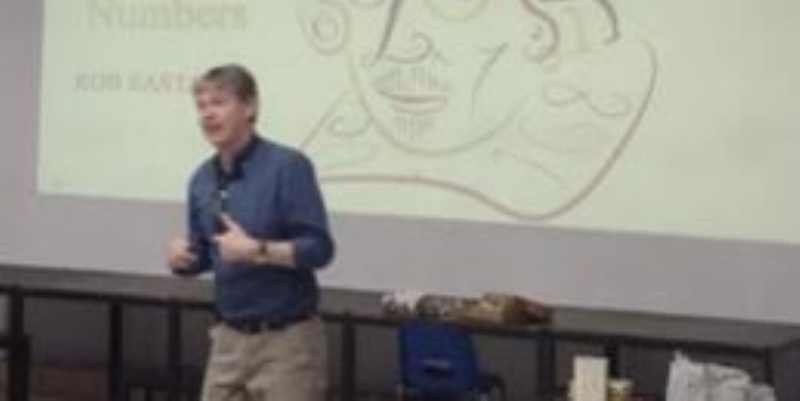Much Ado About Numbers Review

 Walking into K10 - the theatre room also for assemblies - a slight sense of uncertainty hung over us. We were all wondering the same thing: what did our English teacher mean by: "Shakespeare and Numbers"? Most of us thought it was a bit odd, revisiting Shakespeare, a topic we had long since left behind in Year 8 Drama. After all, Shakespeare was a playwright and poet, not a figure you would associate with mathematics. But Rob Eastaway was about to change that perception.
Walking into K10 - the theatre room also for assemblies - a slight sense of uncertainty hung over us. We were all wondering the same thing: what did our English teacher mean by: "Shakespeare and Numbers"? Most of us thought it was a bit odd, revisiting Shakespeare, a topic we had long since left behind in Year 8 Drama. After all, Shakespeare was a playwright and poet, not a figure you would associate with mathematics. But Rob Eastaway was about to change that perception.
His presentation, spanning from Academic Monitoring to the end of Period 3, had to be captivating - and did not disappoint our expectations. He began, asking if we identified more as "Maths" or "Shakespeare" people, illustrating this with a Venn diagram on the board. Unsurprisingly, most of us leaned towards Maths, and few admitted to having any fondness for Shakespeare. Even fewer claimed to fall into both categories. Eastaway then boldly predicted that by the end of his talk, more of us would find ourselves in one, if not both, camps.
He explained that his grasp of mathematics would have been equivalent to what a modern Year 6 student learns, suggesting that we, as Year 8 students, were already more mathematically advanced than him. To illustrate this point, he showed how little maths was in his plays, hence the clever title of his book, Much Ado About Numbers.
 Eastaway had an impressive ability to hold our attention for a full hour and 15 minutes. Throughout the presentation, he gave us fascinating insights into how Shakespeare had learnt back then and how challenging even basic mathematical operations, like multiplication and division, were in his time. At one point, even inviting students to the front to demonstrate it.
Eastaway had an impressive ability to hold our attention for a full hour and 15 minutes. Throughout the presentation, he gave us fascinating insights into how Shakespeare had learnt back then and how challenging even basic mathematical operations, like multiplication and division, were in his time. At one point, even inviting students to the front to demonstrate it.
In between, he engaged us with quiz questions that explored how people approached problems back then. All in all, the assembly was not only informative but unexpectedly enjoyable and engaging.
Samuel Okedeyi and Avyan Poojari, Year 9
